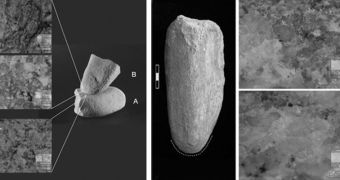Analysis of artifacts dating back to the Stone Age have revealed that our ancestors most likely ate a rather balanced diet, and not just meat, as originally proposed.
Experts believed until now that ancient hominids used a prehistoric version of the Atkins diet, which avoids the use of carbohydrates such as sugar, flour, and high-fructose corn syrup.
But new discoveries, made by studying artifacts recovered from the Czech Republic, Italy and Russia, show that people living more than 30,000 years ago were capable of plant-based food processing.
Furthermore, investigators propose that these processes were very widespread, a lot more so than scientists initially though possible.
The new ideas are supported by the fact that tools found in the three countries all exhibit similar wear patterns on their surface, in addition to traces of starch grains. This would indicate they were used for food processing.
One of the most important aspects of the new discovery is that fact that it changes researchers' understanding about the nature of prehistoric society.
“The importance of plant collection and processing is definitely related to the very significant role that women performed during Paleolithic,” explains study researcher Anna Revedin.
She holds an appointment as an archaeologist at the Italian Institute of Prehistory, Wired reports.
The science group that conducted the new investigation believes that the traces of grain that were discovered on the old artifacts came from the grinding of starch-laden cattails and ferns plants into flour.
Further supporting this theory is the recent discovery of primitive mortars and pestles, tools that are commonly used to grind up seeds when mills are absent.
Full details of the investigation have been published in the October 18 issue of the esteemed journal Proceedings of the National Academy of Sciences (PNAS).
These findings suggest that, while Stone Age hominids may have indeed relied heavily on meat for their survival, they also included processed grain foods in their diets, in addition to the occasional fruits.
Revedin emphasizes that the new research paints a new picture of social groups in the Stone Age.
“Man, the Hunter” is no longer real, as” our research demonstrates how women’s work was definitely crucial for nomadic Paleolithic groups,” the expert concludes.

 14 DAY TRIAL //
14 DAY TRIAL //